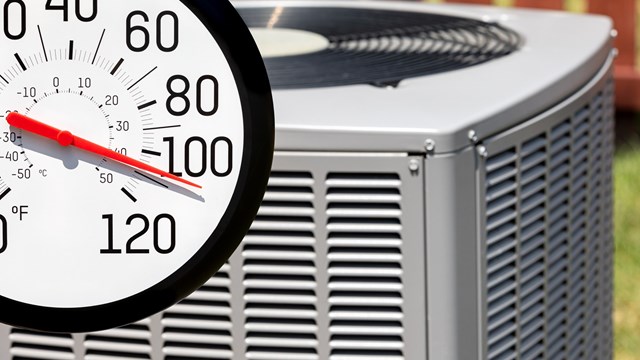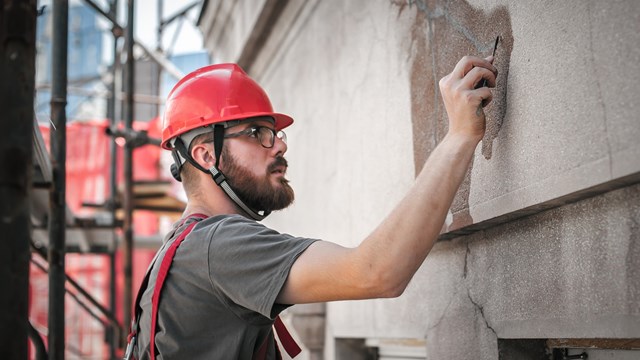Despite rain being essential to life on Earth, the consensus is that it’s mostly a bummer. And the only thing worse than rain outdoors is when it gets indoors. In a multifamily condo or co-op property especially, where one leak can affect the daily life of an entire community, waterproofing a building or complex is paramount. Water infiltration can lead to structural damage, a multitude of safety hazards, or the buildup of mold and mildew, which in turn can cause illness.
Leaks can stem from a wide array of sources, from the roof to the plumbing to the foundation to the exterior envelope, so not only can identifying the root cause be difficult, but deciding what type of qualified professional is best-suited to handle solving the problem can be daunting as well. Also, materials and manufacturers vary widely, both in regard to how buildings are constructed and to how they’re fixed. A smart, proactive board should have a number of trusted consultants to which it can turn both before a leak happens—to ensure that the property is adequately resistant—and after, to guarantee that the issue gets taken care of immediately and thoroughly.
Check I.D.
The first step in leak maintenance is identifying that a property does in fact have a leak. While the indicators may seem obvious, they’re not always – and it pays to know what to look for.
“If something’s leaking, the residents are going to see it,” says Chris Heintz, owner of Atlas Restoration in Franklin Park, Illinois. “Let’s take a finished drywall, for example; you’re going to have moldy smells emanating from behind it, and it will appear to change color. In regard to the foundation, water may pool on the outside. If gutters haven’t been functioning properly, you should check inside, as they may be causing infiltration at those problem spots. A lot of waterproofing is actually just mitigating water.”
Scott Baryiewski, vice president and owner of South Shore Construction in Bridgewater, New Jersey, observes that water will often stain the surroundings of windows or ceilings. “And look for efflorescence on the outside of bricks,” he notes. Efflorescence is the migration of salt to the surface of a porous material, where it forms a whitish or greyish, powdery stain.
Main Source
Once a leak has been identified, it’s time to trace it back to its source for the appropriate treatment. Water often moves in mysterious ways, so this can occasionally prove tricky.
Robert Grochowski, president of the Pompano Beach, Florida-based Robmar Restoration, urges boards and managers to take the age and structure of the building into account when attempting to analyze a leak. “How old is the building? How long has it been since it was last coated? When was the last time that there was restoration done, assuming there has been any? How old are the windows? In many of the properties we deal with, windows have been in place for 40 or 50 years. At some point, those gaskets will blow, and people will assume that a leak is coming through the wall, but it really stems from the window. It can feel like you need to be a forensic scientist to figure things out.”
“Because of gravity, water won’t ever come from below; it will always come from above,” says Baryiewski. “But water is complicated; something could show up somewhere that actually traveled quite a distance, as water always favors the path of least resistance. It could enter your building, travel along a beam, drip onto your ceiling, and you’ll see a wet spot that actually came from one floor up and 15 feet away.”
“Minor leaks could occur continuously without your noticing them, damaging external walls, or occurring in an attic space unobserved,” adds John Bachand, owner of J.P. Bachand Contracting in Newington, Connecticut. “You need to inspect your roof and examine problem areas. Oftentimes a chimney or pipe that penetrates a roof can enable leaks, but if water follows the trajectory of that pipe downward, it can remain in that hidden cavity, and you may not notice mildew or mold building up.”
Heintz, who specializes in below-grade waterproofing, observes that similar confusion can manifest even in the basement. “Boards will believe that water in the basement means that there’s a leak in the foundation, but it could be the result of poor flashing around a doorway two stories up that runs behind bricks. This is why retaining an expert is oftentimes the best bet to determining a source; it’s not always cut-and-dry.”
“Giving precise answers can be the most difficult part,” says Baryiewski. “You can go in and repair everything within the vicinity of a leak, thereby ensuring that the area is water-tight, but that’s also the most costly fix. Your next option is to repair isolated areas from where you believe water may be entering, but there’s no guarantee that you’ll treat the actual leak, which means you’ll have to return again and again until you do. It costs a lot more to fix, say, one window at a time, than it is to deal with ten at once. Not to mention that, between visits, the problem can exacerbate.
“Another option is to perform a water test, where you literally isolate areas and apply water to them, methodically testing areas from where water could potentially stem, and confirming whether or not that is actually happening, until you find the source of the leak,” Baryiewski continues. “From there, you can investigate further in that isolated area. But a lot of people don’t see the benefit of spending money on something that doesn’t strike them as a specific repair.”
Means and Materials
What one uses to fix a leak depends on several factors, including the building material, the cause of the leak, and the various natural elements that inflict wear and tear in that particular region.
“Much of the structure in Florida is stucco, unlike say, New York, where everything is brick-faced and block with an inner steel structure,” says Grochowski. “We have issues with wind and rain, with high-rises on the beach receiving the bulk of the impact, as they’re occasionally hit with 60 mph, sand-laden winds that hurt the buildings’ coatings. You have to repaint and waterproof every seven to 10 years, if you live near the water.”
In New England, materials used to fix a leak can run the gamut, according to Bachand. “We use a lot of clear silicone, and good-old tar roof cement,” he says. “Below-ground, much of the problem is handled with gravity drainage systems, so there are no sealants or topically applied materials. We’re usually putting pipes in, or channels, or any other thing designed to divert the water.”
Heintz, confirms this. “It’s our job to ensure that all of the mitigating areas of the building are functioning properly; that the gutter systems are working, that the downspouts are flowing water away, that sump pumps are regularly checked, and the whole drainage system is working. Ensuring proper grading is a very underrated part of waterproofing, as building managers aren’t always thinking about the exterior grading. But over the years, the ground adjacent to a foundation will settle, so all of a sudden you’ll have ground that’s pitching toward the foundation, directing water inward.”
For his part, Grochowski often leans on manufacturers’ reps to examine a property and determine how often it’s been painted, and then they adjust from there. “If a coating was put on improperly at some point, there may be inner-coat adhesion, which means that coating is pulling away from the original,” he explains. “You’ll have to strip the area around the substrate, re-prime it, and go through the whole procedure. There’s much one has to take into account with waterproofing. You can waterproof a building by cleaning it, sealing it, taking care of the cracks, then putting 100% acrylic paint on top, or you can use a waterproofing product like an elastomeric. But you have to take each building case-by-case and make the appropriate call.”
Who Ya Gonna Call?
Given the multiple potential causes, sources of, and solutions for water infiltration addressed thus far, it follows that there are different types of professionals better or less suited to handle specific issues. In some instances, a board will be able to rely on its maintenance staff or its property management to recommend the appropriate vendor, but, should that help not be offered, it’s good to possess some knowledge of the various tradespeople available.
“In a condo property, if the leak stems from on high, a contractor may need to be called if the repair requires scaffolding of some sort,” says Grochowski, while Heintz notes that, should the leak occur in a basement, a board will want a waterproofing contractor. Should it manifest on, say, the fourth floor, a plumber may be the best bet, as a toilet or sink may be to blame. And Bachand adds that if you notice a discoloration on a ceiling from an upper floor, that leak may come all the way from the very top, and require a roofer to correct.
The most important thing is to be observant, spot a problem as early as possible, and address it without delay. “It’s always more costly in the long run to let a problem linger,” advises Baryiewski. “If you do so, you’ll not only have to fix the leak, but you’ll have to fix any damage caused by not repairing the leak when it was first identified. Property damage, damage to interior finishes--you may be fixing these things over and over.”
Michael Odenthal is a staff writer and reporter for New England Condominium.










Leave a Comment